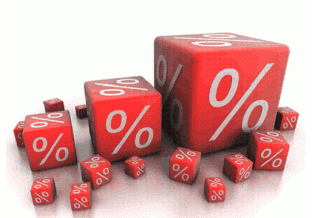
As summarised earlier by Houses and Holes, the Australian Bureau of Statistics (ABS) this morning released the Consumer Price Index (CPI) data for the September quarter 0f 2012, which showed an increase in inflationary pressures across the Australian economy:
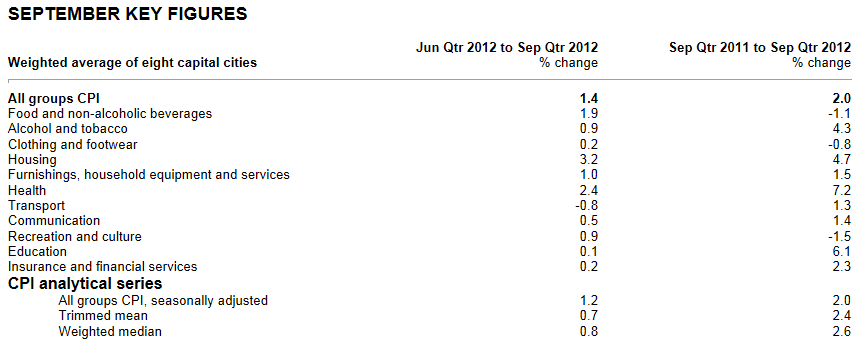
According to the ABS, headline CPI rose by 1.4% in the September quarter, which follows the June’s 0.5% rise. You can see from the below chart that inflationary pressures have begun to build after falling since mid-2011:
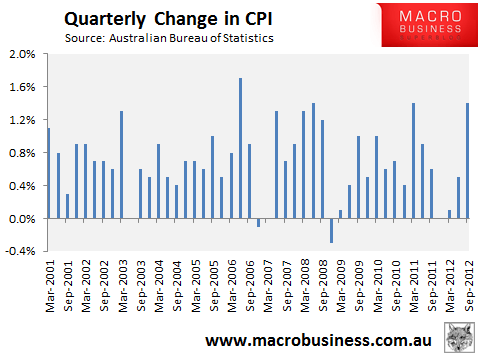
On an annual basis, headline CPI has risen to 2.0% from nly 1.2% the June quarter, which is still below the Reserve Bank of Australia’s (RBA) target of 2% to 3% growth over the medium term, but obviously rising:
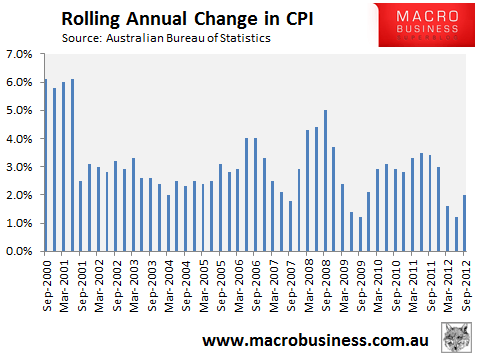
Looking at the core components, price rises in the September quarter were recorded everywhere except transport, where price falls were recorded. Of particular note, electicity and utilities prices – both of which are sub-groups of housing – surged 15.3% and 12.2% respectively over the quarter, following introduction of the carbon tax. In turn these sub-components helped to push-up overall housing inflation by 3.2% over the quarter:
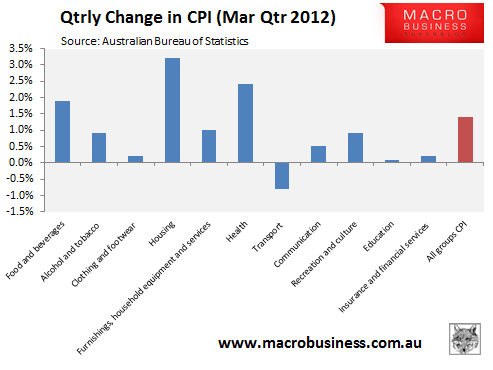
Finally, the ABS includes an ‘analytical series’, which provides alternative measures of underlying inflation in the economy. These measures – namely the trimmed mean and weighted median – aim not to measure the size of inflation (which is captured by the headline figure), but the breadth of price inflation across the basket of consumer goods and services.
The purpose of these measures is to exclude unusually large price movements (in both directions) of just a few of the subgroups, which may have quite an impact on the headline CPI. By excluding these outliers, you can get a feel for how widespread across the consumer basket inflation really is (see here for further details).
According to the RBA, the trimmed mean and weighted median measures rose by less than the headline figure, growing by only 0.7%/0.8% (trimmed mean / weighted median) in the September quarter and by 2.4%/2.6% (trimmed mean / weighted median) over the year – in the middle of the RBA’s inflation target (see below charts).
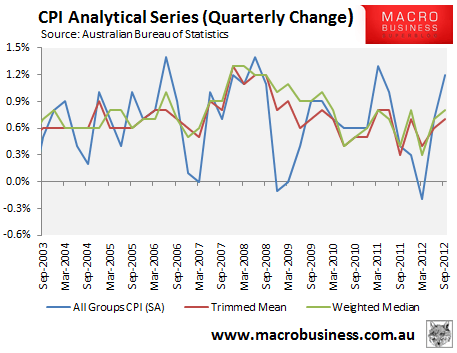
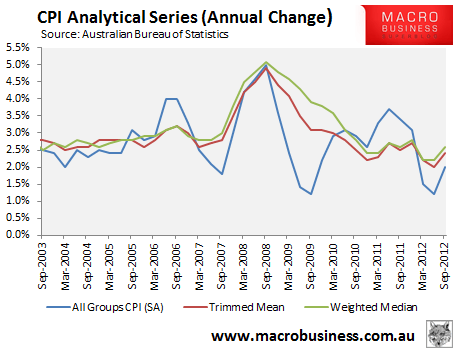
In summary, inflationary pressures appear to be returning in some parts of the Australian economy, complicating the argument for further rate cuts.
The RBA has said it will extrapolate from carbon price rises so I do not think this will prevent another cut in November or December. The trimmed and weighted median should both strip out the volatile items and both are still in the middle of the RBA’s comfort range. However, if prices don’t ease swiftly the RBA will be caught in a bind, with its desire to stimulate housing construction via rate cuts possibly at odds with the need to keep a lid on prices via maintaining the cash rate at current levels.
Twitter: Leith van Onselen. Leith is the Chief Economist of Macro Investor, Australia’s independent investment newsletter covering trades, stocks, property and yield. Click for a free 21 day trial.

